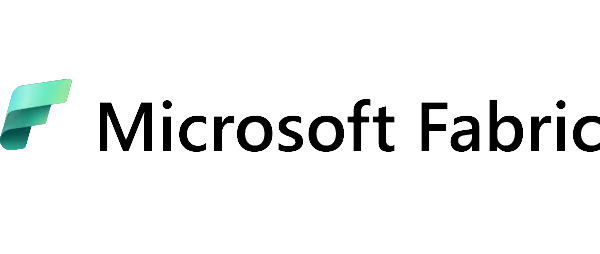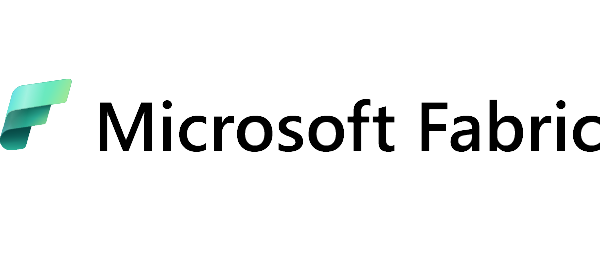Have you ever heard of the term Azure Data Fabric? It’s an informal name often used to describe Microsoft Fabric – a modern, cloud-based data ecosystem. While the official name of the service is Microsoft Fabric, many IT professionals and data analysts use the term “Azure Data Fabric” to emphasize its deep integration with Microsoft Azure services.
In practice, this means that organizations can connect data from multiple sources – ERP systems, Excel sheets, CRM applications, or marketing platforms – within one centralized environment. The result? A unified and structured data model that allows for faster business decision-making and more reliable, up-to-date reports.
The Azure Data Fabric (Microsoft Fabric) platform enables BI teams and analytics departments to:
- build and maintain a centralized cloud data environment,
- automate ETL processes and data integration from multiple sources,
- create interactive Power BI reports,
- ensure full data access control and security.
This combination of features makes Azure Data Fabric a key component of digital transformation for organizations that rely on data-driven decision-making.
From data silos to information synergy
In many organizations, data is scattered across multiple systems – ERP, CRM, Excel files, or marketing tools. Each team works in its own environment, leading to the creation of so-called data silos. In practice, this means that information doesn’t flow freely between departments, and access to a complete business picture is limited.
What are data silos and what problems do they cause?
A data silo is an isolated repository of information that doesn’t communicate with other systems within the company. This leads to several operational challenges:
- teams make decisions based on incomplete or outdated data,
- reports are created manually, increasing the risk of errors,
- discrepancies appear in key metrics – for example, between sales and finance departments,
- strategic analyses take longer, slowing down the decision-making process.
How Azure Data Fabric removes these barriers
The Azure Data Fabric (Microsoft Fabric) platform was designed to connect all data within a single, unified environment. With its capabilities, organizations can:
- centralize data from different sources – both on-premises and cloud-based,
- synchronize information in real time, eliminating departmental inconsistencies,
- create a unified data model that serves as the foundation for Power BI reporting and analysis,
- build a data-driven culture, where decisions are made based on a single, reliable source of truth.
Key capabilities of Azure Data Fabric
Azure Data Fabric combines functionalities that not only enable data integration but also allow for comprehensive and secure data management.
Unified data model
With Azure Data Fabric, it’s possible to connect data from multiple systems – ERP, CRM, finance, marketing, or logistics – in one place. Users gain access to a complete view of business performance, making it easier to analyze results and plan strategic initiatives.
Data flow automation
Tools such as Data Factory and Data Pipeline enable automated data movement, transformation, and updating. This makes ETL processes faster and less prone to human error.
Security and compliance
Azure Data Fabric offers built-in mechanisms for access control, encryption, and auditing. Data is protected according to the latest security standards – a critical factor for sectors where confidentiality and compliance are priorities.
Flexibility with Power BI and other Microsoft tools
Thanks to its close integration with Power BI, Azure Synapse, Data Lake, and Excel, analytics teams can work in familiar environments. Data stored in Fabric is available in real time, enabling dynamic reports and visualizations that support everyday business decisions.
Example: what data integration looks like in practice
Imagine a company that processes hundreds of sales transactions every day in its ERP system while running marketing campaigns across multiple channels – such as Google Ads and social media. Sales and marketing data exist in two separate systems, making it difficult to analyze campaign effectiveness.
With Azure Data Fabric (Microsoft Fabric), both sources can be easily combined into a single, consistent data model. After configuring the necessary connections, Fabric automatically synchronizes the data in the cloud. Then, data can be cleaned, transformed, and prepared so that Power BI reports show the full picture – from campaign costs to actual sales revenue.
The result?
- all data is updated in real time,
- reports display the exact ROI for each campaign,
- management can make decisions based on a single source of truth, without manually merging spreadsheets.
Business benefits of implementing Azure Data Fabric
Implementing Azure Data Fabric is not just about modernizing data infrastructure – it’s about fundamentally changing how organizations work with information.
- Faster decision-making – data from different systems is centralized and updated continuously.
- Better collaboration – finance, sales, and marketing departments analyze the same reports based on unified data.
- IT cost optimization – fewer tools, automated ETL processes, and reduced infrastructure maintenance efforts.
- Scalability and future-readiness – the Azure-based architecture allows easy expansion as data sources and users grow.
This combination of flexibility, security, and transparency makes Azure Data Fabric the foundation of a modern approach to data analytics.
Integrating Azure Data Fabric with Power BI
One of the greatest advantages of Azure Data Fabric is its full integration with Power BI – a tool that makes data visualization and analysis accessible and intuitive.
This integration allows organizations to:
- access Fabric data directly in Power BI, without manual exporting,
- create dynamic dashboards with up-to-date KPIs,
- have reports automatically refreshed, eliminating the risk of working with outdated information,
- build advanced analytical models that combine data from multiple departments.
As a result, Power BI becomes not only a reporting tool but also an interactive environment supporting strategic decisions based on data from across the organization.
Data consolidated within Azure Data Fabric opens entirely new possibilities for Power BI. Together, these solutions create a unified ecosystem that allows companies to move from simple reports to advanced business analytics.
With Fabric integration, Power BI gains direct access to current data stored in the cloud. Data is automatically synchronized, so every report or dashboard reflects the actual state of business processes – without manual updates or file imports.
In practice, this means:
- users can create real-time reports that display KPIs and sales results continuously,
- data from different sources – financial, marketing, or operational – is merged into a single data model,
- advanced visualizations can be built to support strategic decision-making,
- Power BI reports are always based on current, consistent data from Azure Data Fabric.
Example: synergy between Microsoft Fabric, Power BI, and Azure services
Imagine a company that collects data in Azure SQL Database, processes it in Microsoft Fabric, and then visualizes it in Power BI. Thanks to the shared cloud environment, data flows automatically between services – from retrieval to final presentation.
This architecture eliminates the need for complex integrations or exporting CSV files. As a result, analytics teams can focus on business insights rather than technical aspects of data merging. This synergy between Azure Data Fabric, Power BI, and the Azure ecosystem is one of Microsoft’s biggest advantages.
Summary: data unified in a single ecosystem
In a world where data is a key business asset, Azure Data Fabric (Microsoft Fabric) offers a comprehensive approach to data integration, analysis, and protection.
Key benefits of this solution include:
- integration of data from multiple sources – both on-premises and cloud-based,
- security and compliance through built-in protection mechanisms,
- consistency and automation of reporting processes,
- full integration with Power BI and Azure services, enabling dynamic reporting and real-time analysis.
Azure Data Fabric is not just a technology; it’s a strategic step toward modern data analytics. Implementing this solution helps organizations make fact-based decisions rather than relying on intuition, gaining a competitive edge in an increasingly digital world.



